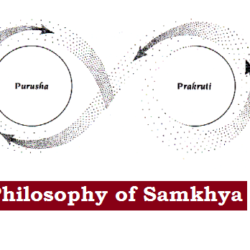
Public Administration
L D White defines it as
‘Public Administration is detailed and systematic execution of public law. Every particular application of law is an act of administration’.
D Waldo defines it as
‘Public Administration is the art and science of management applied to the affairs of the state’.
Meaning:
- Public Administration is a cooperative effort in a public setting and covers all the three branches- legislative, executive and judiciary.
- It is the action part of the Govt and ‘public’ aspect gives the discipline a special character, focus being on the public.
Scope of Public Administration: to respond to the concerns of Public Administration
- Promoting ‘publicness’: focuses explicitly on ‘public’ in terms of democratic values
- Policy sensitivity: Govt action in times of rapid changes and social crisis and necessary timely policy formulation
- Implementation capability: delivery of goods and services on the demands of citizens
- Shared understanding of social reality: needs to understand the divers interests and influences
- Administration as a learning experience: shifting social reality and complex environment conditions. Public Administration has to be proactive, innovative, risk-taking and more adaptive to changes
Nature of Public Administration:
- The original disciplinary interest was to improve Govt performance. However, under the impact of changing societal conditions, it has been evolving over the years. This led to its separation from the parent discipline of Political Science.
- In enthusiasm to reform the Govt and make its agencies more businesslike and productive, Public Administration tilted towards ‘Management Science’. The focus is on the managerial tools and principles such as budgeting, use of operation research methods, computer technology, etc.
- Public Administration has gradually come to assume a vocational character (job oriented) much in same fashion as management institutes produce managers for business world.
Locus and Focus of Public Administration:
The shift of disciplinary focus from Political Science to Management Science has been questioned by many. Golembiewski has posed this dilemma in terms of ‘Locus’ and ‘Focus’.
Locus: where of the field
Focus: specialized what of the field
- Locus was for a long time with political science.
- Focus, there has been increasing tendency to emphasize on administrative techniques and not on public policy.
- However, since the New Public Administration (NPA) Movement of late 1960s, there has been an increasing awareness of Social Science character of Public Administration.
Public Administration and Private Administration
The managerial euphoria led to a blurring of distinction between Public and Private Administration. The distinction is greatly influenced by the political philosophy of each nation. In the USA, the public sector is, in many ways, dependent on the private sector, hence more blurring of lines.
Similarities between Public Administration and Private Administration:
- General welfare should be common concerns for both.
- Private Administration can’t ignore the larger public interests.
- Similarly, Public Administration can hardly ignore the needs of efficient management.
Distinctions between Public Administration and Private Administration:
| Public Administration | Private Administration |
| 1. Main motive being public service and public satisfaction. | 1. Main motive is profit. |
| 2. Rules and regulations are strictly followed. | 2. Relatively free from specific laws. |
| 3. More exposed to public gaze. | 3. Relatively closed. |
| 4. Involves complex decision making (many meetings and consultations). | 4. Less complex as involved freedom of decision making |
| 5. Value oriented (nation building) | 5. Follows guidelines laid by public authorities. |
Methods to study Public Administration:
Approaches to study Public Administration can be categorized from many perspectives.
- Normative: what it should be
- Empirical: analysis of actual administrative situation
Based on the object of study:
- Philosophical approach: to find out the principles underlying Public Administration activities
- Legal approach: Public Administration considered being a part of law concentrating on legally prescribed structure and organization of public authorities.
- Historical approach: study of Public Administration of past within a particular time span and putting information in the chronological order.
- Scientific approach: generalization through observation, collection of data, verification of hypothesis
- Case method approach: narration of past happenings of Public Administration keeping in view the present relevance
- Behavioral approach: inter-disciplinary approval by studying individual and collective human behaviour
New Public Administration (NPA)
New Public Administration (NPA) evolved during 1960s due to rapidly changing environment- economic, social, political, technological, human and social tensions among several sections of society. ‘Social Equity’ is the key concept stressed.
Features of New Public Administration:
- Change in administrative responsiveness: to meet the environmental changes
- Rationality: citizen-centric actions
- Management- worker relations: human relation approach enhances both morale and productivity
- Better organizational structures: appropriate decentralization and modifications of hierarchies
- Education in Public Administration: heterogeneity is characteristics of it using several theories instead of any single approach/theory
Goals of New Public Administration:
- Relevance: Public Administration emphasized on efficiency and economy and says little about contemporary issues. New Public Administration wanted meaningful studies on contemporary issues.
- Values: New Public Administration rejected value-neutral approach of Public Administration and emphasized and advocated the interests of disadvantaged people.
- Social equity: it focuses on the underprivileged; decentralization and democratic decision making.
- Change: change is a constant fact of administration life and social equity requires promotion of change.
- Client orientation: as per D Waldo NPA has three constituents- citizen oriented bureaucracy, representative bureaucracy and people’s participation.
New Dimensions in Public Administration:
- Growing emphasis on social equity
- Increased public participation in decision making
- Strengthened political well as administrative accountability
- Innovative organization techniques to increase capability
Criticism of New Public Administration: Anti-Goals of NPA
Though NPA brought Public Administration closer to Political Science, it was criticized for the following reasons (called Anti-Goals of NPA):
- Anti-positivist: NPA rejected one definition of Public Administration which is value free and not properly involved in policy making
- Anti-technical: it attacks mechanical aspect but maintains status-quo in skill and technology. It also emphasize on emotive-creative nature of mankind.
- Anti-bureaucratic/hierarchical: NPA attacks neutrality and organizational hierarchy.
Development Administration
It refers to those aspects of Public Administration which are needed to carry out developmental activities (to improve social and economic conditions).
Elements of Development Administration:
- Change oriented: Development Administration system would be dynamic as change is a strategy to deal with dynamic issues.
- Goal-oriented: it is concerned with achievement of progressive political, economic and social goals.
- Progressive: it has greater participation in Govt affairs (political system), economic development with more equitable distribution of wealth (economic system) and social equity-equality
- Planning: planning helps in maximum possible utilization of time and resources. Developing nations adopted socio-economic planning as development strategy.
- Innovative: it stresses upon identification and adoption of new structures, methods, plans to achieve developmental objectives. E.g. DRDA, MADA, etc.
- Flexibility: ‘rule oriented’ administration can fall in the trap of treating rules as ends rather than means. Development Administration requires adequate autonomous in decision making with accountability and promotes creativity and innovation.
- High degree of motivation: it requires high motivation to accomplish developmental goals and extra dedication and perseverance.
- Client-oriented: it focuses on citizen-centric developmental activities being responsive to the needs, wishes and aspirations of people.
- Participation: it emphasizes on the participation (Bottom-up approach) in formulation and implementation. District, Block and Gram Panchayat level planning is gaining importance.
- Effective integration: in focuses on the coordination among various levels and functionaries as every organization is designed to undertake specialized tasks.
- Coping ability: it has to respond to demands and challenges arising from its environment. It continuously tries to be more sensitive and responsive to the challenges.
Development Administration Vs Administrative Development:
Administrative Development implies the enhancement of the capacity and capability of an administration system to achieve the prescribed goals. The strategies for administrative reforms are a part of the process of Administrative Development.
Both Development Administration and Administrative Development are interdependent. Any society experiencing development (political, social and economic) is likely to affect administration system and requires competent administration system.
Comparative Public Administration
It is the comparative study of Govt administrative systems functioning in different countries of the world. The unit of analysis is an administrative system (on the whole or various parts).
Evolution of Comparative Public Administration:
- World War I and failure of the League of Nations led to different needs of countries
- Major turn after World War II and end of imperialism
- Development in former colonies under United Nations
- USA led the studies in providing financial help to curb communism and control the market share
- New resurgence during 1980s and 90s when good governance and rule of law got emphasised
Analysis Levels:
- Macro: whole administrative system (e.g. Administrative systems of two nations)
- Middle range: significantly large system (e.g. Higher bureaucracy)
- Micro: small part (e.g. Recruitment system)
Nature of Comparative Public Administration: Change in trends
- Normative to empirical:
- Efficiency and economy were considered to be primary goals of an administrative system.
- As the number of developing countries emerged, structure and behaviour of administrative systems were focused.
- Concept of Development Administration and ideal goals of Public Administration- movements influenced the nature.
- Ideographic to nomothetic:
- Ideographic (concentrates on unique cases), nomothetic (generalization of theories)
- Public Administration focused on an individual nation or institution (descriptive)
- Non-ecological to ecological:
- There was no serious attempt to examine relationship between administrative system and ecology.
- After World War II, studies specifically looking at environmental settings viz-a-viz administrative systems.
Scope of Comparative Public Administration:
- Emergence of many developing nations requires comparison among the administrative systems of the world. Appropriate systems and Administrative reforms can be implemented based on analysis.
- Success of Russian Revolution emphasized the role of state in welfare and development.
- Development Administration increased the role of administration many-folds.
- Helps in scientific study of Public Administration.

 Home
Home Syllabus
Syllabus Contact Us
Contact Us








